According to World Bank data, amongst the 115 low-income countries of the world, the proportion of people in extreme poverty (that is, with an income of US$1.25 [...]]]>
According to World Bank data, amongst the 115 low-income countries of the world, the proportion of people in extreme poverty (that is, with an income of US$1.25 per day per person, adjusted for purchasing power parity) declined from 43.4 percent in 1990 to 17 percent in 2011.
In other words, 912 million people were lifted out of extreme poverty over the past two decades.
This drop was mainly concentrated in East Asia and the Pacific, where the incidence of extreme poverty was reduced from 57 to 7.9 percent during the same period (i.e. 750 million people). In Southeast Asia, it dropped from 54.1 to 24.5 percent (221.5 million people).
In Latin America and the Caribbean, between 1990 and 2011, the incidence of extreme poverty dropped from 12.2 to 4.6 percent, meaning that 25.5 million Latin Americans no longer live in this extreme condition.
Two decades ago, poverty was defined in monetary terms, based on a consensus around the concept that income was an adequate measure to represent wellbeing.
Today, it is more commonly understood that well-being is something that must be seen within a wider perspective. Poverty must be understood by identifying deprivations in factors that go beyond personal income.
In the international arena, perhaps the most significant progress made in this regard has been the increased use of the notion of multidimensional poverty. With more or less detail, it is often measured based on nutrition and infant mortality, years of schooling and school attendance, type of housing and access to the basic supplies that this entails, as well as the ownership of basic assets.
In September of next year, the member states at the United Nations will decide on the new global agenda for development. At the moment, the proposal that is most likely to be accepted on poverty includes the goal that, by 2030, extreme poverty as set by poverty-line income threshold of US$1.25 per day will have been completely eliminated, and the proportion of people living in poverty – in all its dimensions according to the different definitions used in each country – will be halved.
From an optimistic perspective, this proposal implies that many countries have already started to take an important step towards a new way of thinking and furthering the wellbeing of individuals, and that many other countries will also do so in the near future.
Tell us – beyond income, what other material dimensions of well-being should also be considered?
*Alfredo González Reyes is an UNDP specialist on poverty and human development in Latin America and the Caribbean @UNDPLAC @pulpogonzalez www.latinamerica.undp.org
]]>Noor Wali Sayeed Shinwarai writes for Killid, an independent Afghan media group in partnership with IPS. By distributing the testimonies of survivors of war through print and radio, Killid strives for greater public awareness about people’s hopes and claims for justice, reconciliation and peace.
For this testimony, Shinwarai [...]]]>
Noor Wali Sayeed Shinwarai writes for Killid, an independent Afghan media group in partnership with IPS. By distributing the testimonies of survivors of war through print and radio, Killid strives for greater public awareness about people’s hopes and claims for justice, reconciliation and peace.
For this testimony, Shinwarai interviewed Farid Ahmad, who was a child when his father was badly injured in a rocket attack, forcing Farid to become the breadwinner for the family.
“When I was born, the country was in the control of Russians. Then the parties (mujaheddin groups) got power and nobody could go out of the house. The war among the parties was going on every day. Unarmed civilians were being killed. Kabul city looked like a graveyard,” said Farid Ahmad.
He was 10 years old when his father was seriously injured. Schools had been closed for a long time because of the war between fighters of Shura-e-Nezar (the group led by Ahmad Shah Massoud) and Uzbek warlord General Abdul Rashid Dostum. The war, which started in 1993, was called the “hard war” in Kabul. Rockets fell through the day and night. One fell on a factory building in Qasaba where Farid’s father, Marjan, was at work as a welder.
“My father was not a political person, he was just a welder,” said Farid. “He got such serious wounds that no clinic or doctor in Qasaba would treat him. My father had become blind,” he added.
The family lost their sole breadwinner, and no relative offered to look after them. “The people in our tribe help in hard times but my uncles in Laghman did not help us, nor did our aunts in Jalalabad ask about us,” he said.
The family starved for nine days. Every night they went to bed hungry. There was no money to buy food or candles. “We spent night after night in the dark,” he recalled.
It was not easy to flee Kabul either, because everywhere warlords had set up barriers, which could be crossed only on paying a toll. Anyone caught sneaking across would be beaten or killed.
Hard times
But early on the tenth day there was good news. The war stopped for 24 hours. Rival sides had agreed to a ceasefire. The family loaded their few belongings in an old truck, and left Kabul for Jalalabad. “My brothers and sisters were all younger than me. My father, who had not gotten any treatment, was lying on the floor of the truck. We got to Jalalabad with difficulty,” he recalled.
In Jalalabad, the 10-year-old took his father to the public hospital, and his siblings to the house of an aunt. He went to the city’s Hesar Sahahi refugee camp where many thousands of families were sheltering in tents. In a corner of the camp, Farid made a make-shift shelter out of waste. The family was brought to live there. “The weather was hot in the day. There was no water. We would eat once a day, ” said Farid. “My father slowly recovered, but not his eye sight.”
The camp would be their home until 1996, when the Taliban pushed the mujaheddin out of Kabul.
“Believe me we, didn’t know what Eid was – we could never afford to celebrate.” Farid remembers the one time his younger brothers found a handful of henna, traditionally used for body decorations to mark the celebration of the end of Ramadan, which traditionally involves lavish dispays of food and festivities.
A school was opened in the camp, allowing his brothers and sisters to get an education. Meanwhile, Farid worked as a day labourer, leaving early in the morning, day after day to find work.
Signs of hope
Like so many others, Farid, though still a teenager, had become the breadwinner of the family. He said there were times when he wanted to cry and scream loudly out of frustration but he was careful not to upset his parents. “My father was enduring the pain of blindness. Everything was dark for him. I felt that I, too, should endure the pain and go to work.”
In 1996, the family moved back to Kabul, but life did not get any better. “Untill 2002, when the Taliban fell and Karzai assumed power, nobody in the family knew whether we would have tears for dinner or vegetables,” he said.
Things have gradually improved over the last decade. Farid has found work with a non-governmental organisation. His brothers have reached university. “One can read and write four languages – Dari, Pashto, English and French,” he said, proudly. “I had not seen a smile on my mother’s face for years. Now she smiles, and my father has reconciled to being blind.”
Three years ago Farid, who had saved enough money, got married. “God has lit the candles in our house once again. My daughter is one and a half years old, and my son is one month old.
My father put his hand on his face and named him Sulaiman.”
]]>
The numbers [...]]]>
The numbers are staggering— 33 percent of the Illinois population is now living in poverty, up almost 50 percent from 2007. In Chicago roughly 50 percent of the population is living in, or near, low-income poverty. The breadth of the economic crisis in Illinois, and specifically in Chicago, is almost overwhelming. According the U.S. Census, the population of almost half of the Census tracts (neighborhood subdivisions) in Chicago have been at poverty levels for five consecutive decades—which means this crisis predates the 2008 financial crisis.
Clearly, economic recovery has been a failure in Chicago. Yet, as the numbers illustrate, this state of crisis has been a constant in parts of Chicago for decades, and none of the capitalistic frameworks have provided anything more than a bandage.
With a large portion of the population plunged into poverty and more than 31.2 Percent of the Chicago labor force working in stagnant low-wage jobs, how can meaningful and sustainable economic and community development be achieved? According to Dennis Kelleher, Executive Director at the Center for Workplace Democracy (CWD), a Chicago-based organization, the answer lies in the cooperative movement, specifically worker cooperatives.
Worker cooperatives are businesses owned by their workers. Unlike standard businesses, worker cooperatives are governed by a mantra of “one member, one share, one vote.” The direction, management, and funds are equally controlled by the workforce—a truly democratic workplace. Though these co-ops have achieved economic success globally, especially Mondragon in Spain and Emilia-Romagna in Italy, there are only about 300 registered worker cooperatives in the U.S.
“There are not a lot of cooperatives of any type in Chicago and we’re hoping to change that,” said Kelleher. “One of the things CWD is trying to do is create a network—a forum—for cooperatives and collectives in Chicago.” Much like how Mondragon created lasting economic improvement in an oppressed region, Kelleher strongly believes that the very essence of worker cooperatives, the way that they give ownership, power, resources, and control back to workers and their communities, is key to creating lasting structural changes in Chicago’s neighborhoods.
CWD, a four-person organization founded in October 2011 as a “worker-ownership development center,” was instrumental in helping Republic Windows and Doors workers in their struggle to buy their business and convert it into a worker cooperative. Building off of their partnership with Republic Windows and Doors, CWD began working with Austin Polytechnical Academy to create a student-run worker cooperative and with Latino Union and Cafe Chicago to develop a worker-owned coffee roasting business.
Through CWD’s work in the community, Kelleher noticed that people were “looking for new ways of doing things”. Momentum started to grow and CWD responded with a larger initiative, their Cooperative Business Academy, inspired by Cooperation Texas and Green Worker Cooperatives. The goal is “to create sustainable cooperative businesses that will go on to positively impact their communities,” said Kelleher.
The Academy is not your standard MBA program or business school, but rather hopes to develop transformative businesses that are empowering to worker owners, rooted in their communities, generating community wealth, and cultivating a culture of democracy. To do so, CWD will be building their Academy around the principles of democratic and participatory education, with the belief that democratic identities are not delivered to people, they are learned and experienced.
Kelleher finds democratic education crucial to overcoming some of the many challenges of the Academy, such as designing a curriculum that is meaningful and accessible to a wide range of people from different racial, ethnic, lingual, and class backgrounds. To CWD, this Academy is a vehicle to bridge the barriers that have been erected in Chicago. Though still in the planning phase, the CWD Academy demonstrates that the cooperative movement is gaining traction, especially in economically oppressed urban centers. According to Kelleher, this is also part of a more personal ideological shift, and a desire in people to seek cooperation and recapture our democratic identities.
Andrew Stachiw is a worker-owner at The Toolbox for Education and Social Action, which created and published Co-opoly: The Game of Cooperatives. You can follow them on Twitter and Facebook.
]]>By Andy Kroll
Reposted by arrangement with Tom Dispatch
Food pantries picked over. Incomes drying up. Shelters bursting with the homeless. Job seekers spilling out the doors of employment centers. College grads moving back in with their parents. The angry and [...]]]>
By Andy Kroll
Reposted by arrangement with Tom Dispatch
Food pantries picked over. Incomes drying up. Shelters bursting with the homeless. Job seekers spilling out the doors of employment centers. College grads moving back in with their parents. The angry and disillusioned filling the streets.
Pan your camera from one coast to the other, from city to suburb to farm and back again, and you’ll witness scenes like these. They are the legacy of the Great Recession, the Lesser Depression, or whatever you choose to call it.
In recent months, a blizzard of new data, the hardest of hard numbers, has laid bare the dilapidated condition of the American economy, and particularly of the once-mighty American middle class. Each report sparks a flurry of news stories and pundit chatter, but never much reflection on what it all means now that we have just enough distance to look back on the first decade of the twenty-first century and see how Americans fared in that turbulent period.
And yet the verdict couldn’t be more clear-cut. For the American middle class, long the pride of this country and the envy of the world, the past 10 years were a bust. A washout. A decade from hell.
Paychecks shrank. Household wealth melted away like so many sandcastles swept off by the incoming tide. Poverty spiked, swallowing an ever-greater share of the population, young and old. “This is truly a lost decade,” Harvard University economist Lawrence Katz said of these last years. “We think of America as a place where every generation is doing better, but we’re looking at a period when the median family is in worse shape than it was in the late 1990s.”
Poverty Swallows America
Not even a full year has passed and yet the signs of wreckage couldn’t be clearer. It’s as if Hurricane Irene had swept through the American economy. Consider this statistic: between 1999 and 2009, the net jobs gain in the American workforce was zero. In the six previous decades, the number of jobs added rose by at least 20% per decade.
 Then there’s income. In 2010, the average middle-class family took home $49,445, a drop of $3,719 or 7%, in yearly earnings from 10 years earlier. In other words, that family now earns the same amount as in 1996. After peaking in 1999, middle-class income dwindled through the early years of the George W. Bush presidency, climbing briefly during the housing boom, then nosediving in its aftermath.
Then there’s income. In 2010, the average middle-class family took home $49,445, a drop of $3,719 or 7%, in yearly earnings from 10 years earlier. In other words, that family now earns the same amount as in 1996. After peaking in 1999, middle-class income dwindled through the early years of the George W. Bush presidency, climbing briefly during the housing boom, then nosediving in its aftermath.
In this lost decade, according to economist Jared Bernstein, poor families watched their income shrivel by 12%, falling from $13,538 to $11,904. Even families in the 90th percentile of earners suffered a 1% percent hit, dropping on average from $141,032 to $138,923. Only among the staggeringly wealthy was this not a lost decade: the top 1% of earners enjoyed 65% of all income growth in America for much of the decade, one hell of a run, only briefly interrupted by the financial meltdown of 2008 and now, by the look of things, back on track.
The swelling ranks of the American poor tell an even more dismal story. In September, the Census Bureau rolled out its latest snapshot of poverty in the United States, counting more than 46 million men, women, and children among this country’s poor. In other words, 15.1% of all Americans are now living in officially defined poverty, the most since 1993. (Last year, the poverty line for a family of four was set at $22,113; for a single working-age person, $11,334.) Unlike in the lost decade, the poverty rate decreased for much of the 1990s, and in 2000 was at about 11%.
Even before the housing market imploded, during the post-dot-com-bust years of “recovery” from 2001 to 2007, poverty figures were the worst for any recovery on record, according to Arloc Sherman, a senior researcher at the Center on Budget and Policy Priorities. The Brookings Institution, meanwhile, predicts that the ranks of the poor will continue to grow steadily during the years of the Great Recession, which officially began in December 2007, and are expected to reach 50 million by 2015, almost 10 million more than in 2007.
Hitting similar record highs are the numbers of “deep” poor, Americans living way below the poverty line. In 2010, 20.5 million people, or 6.7% of all Americans, scraped by with less than $11,157 for a family of four — that is, less than half of the poverty line.
The ranks of the poor are no longer concentrated in inner cities or ghettos in the country’s major urban areas as in decades past. Poverty has now exploded in the suburbs. Last year, more than 15 million suburbanites — or one-third of all poor Americans — fell below the poverty line, an increase of 11.5% from the previous year.
This is a development of the last decade. Those suburbs, once the symbol of by-the-bootstraps mobility and economic prosperity in America, saw poverty spike by 53% since 2000. Four of the ten poorest suburbs in America — Fresno, Bakersfield, Stockton, and Modesto — sit side by side on a map of California’s Central Valley like a row of broken knuckles. The poor are also concentrated in border towns like El Paso and McAllen, Texas, and urban areas cratered by the housing crash like Fort Myers and Lakeland, Florida.
The epidemic of poverty has hit minorities especially hard. According to Census data, between 2009 and 2010 alone the black poverty rate jumped from 25% to 27%. For Hispanics, it climbed from 25% to 26%, and for whites, from 9.4% to 9.9%. At 16.4 million, more children now live in poverty than at any time since 1962. Put another way, 22% of kids currently live below the poverty line, a 17-year record.
America’s lost decade also did a remarkable job of destroying the wealth of nonwhite families, the Pew Research Center reported in July. Between 2005 and 2009, the household wealth of a typical black family dropped off a cliff, plunging by a whopping 53%; for a typical Hispanic family, it was even worse, at 66%. For white middle-class households, losses on average totaled “only” 16%.
Here’s a more eye-opening way to look at it: in 2009, the median wealth for a white family was $113,149, for a black family $5,677, and for a Hispanic family $6,325. The second half of the lost decade, in other words, laid ruin to whatever wealth was possessed by blacks and Hispanics — largely home ownership devastated by the popping of the housing bubble.
The New Lost Decade
As for this decade, less than two years in, we already know that the news isn’t likely to be much better. The problems that plagued Americans in the previous decade show little sign of improvement.
Take the jobs market. Tally the number of jobs eliminated since the recession began and also the labor market’s failure to create enough jobs to keep up with normal population growth, and you’re left with an 11.2 million jobs deficit, a chasm between where the economy should be and where it is now. Filling that gap is the key to any recovery, but to do so by mid-2016 would mean adding 280,000 jobs a month — a pipe dream in an economy limping along creating an average of just 35,000 jobs a month for the past three months. Unless the country’s jobs engine were somehow jump-started, 11.2 million jobs in this decade would be a real stretch.
But few in Congress, and none of the controlling Republican politicians, will even think about using the jumper cables. President Obama’s relatively modest American Jobs Act, for instance, was declared a corpse on arrival at the House of Representatives. On Monday, a reporter asked House Majority Leader Eric Cantor (R-Va.), “The $447 billion jobs package as a package: dead?” Yes, Cantor assured him, indeed it was.
The president and his administration watch despondently from the other end of Pennsylvania Avenue. And for the majority of Americans, a jobless “recovery” exacts an ever-greater toll on their earnings, their families, their health, their basic ability to make ends meet.
The question on many economists’ minds is: Will the U.S. slump into a double-dip recession? But for so many Americans living outside the political and media hothouses of Washington and New York, this question is silly. After all, how can the economy tumble back into recession if it never left in the first place?
No one can say for certain how many years will pass before America regains anything like its pre-recession swagger — and even then, there’s little to suggest that the devastating effects of the middle class’s lost decade won’t have changed this country in ways that will prove permanent, or that the gap between the wealthy and everyone else will do anything but increase in good times or bad in the decade to come. The deep polarization between the very rich and everyone else has been decades in the making and is a global phenomenon. Reversing it could be the task of a lifetime.
In the meantime, the middle class has flat-lined. Life support is nowhere close to arriving. One lost decade may have ended, but the next one has likely only begun.
Andy Kroll is a staff reporter in the D.C. bureau of Mother Jones magazine and an associate editor at TomDispatch. He writes about the economy and national politics, and has appeared on MSNBC, Al Jazeera English, and Countdown with Keith Olbermann.
Copyright 2011 Andy Kroll
]]>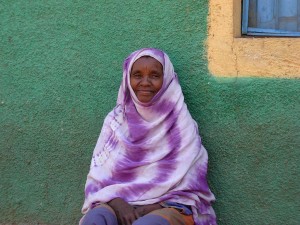
Women manage family health in Ethiopia.
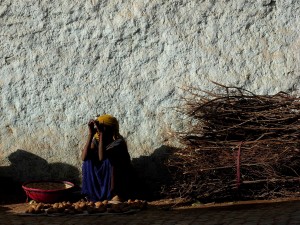
Pics by M. Sayagues
At the coffee plantation Monte Café, to the left of its dilapidated pink colonial buildings, stands a huge shed. The caretaker unlocks a gigantic padlock and we step into a surreal [...]]]>

Ghost factory. By M. Sayagues
At the coffee plantation Monte Café, to the left of its dilapidated pink colonial buildings, stands a huge shed. The caretaker unlocks a gigantic padlock and we step into a surreal décor for a tropical Blade Runner movie.
The shed houses a web of pipes and drums, coffee-processing machinery made by the Brazilian company Pinhalense. It is huge, complex – and never used.
The caretaker remembers when the machines were put in place, about a decade ago, but he never saw them working.
Donors pulled the plug on this US$24 million project after US$14 were spent and a few siphoned off.
The project was sponsored by ESAGRI, the agricultural arm of the Portuguese group Espirito Santo, with US$10.9 from the African Development Bank, totalling US$13 in foreign aid.
I went with a coffee grower who groaned at all the inappropriate elements: for example, a wasteful layout and excessive drying capacity for the production of the 1,800-hectares plantation. The optical scanner for bean selection made him laugh: it required a dust-free, air-conditioned environment, not the dust, humidity and power cuts of Sao Tome.
Going back to the capital after 4 pm, there were no taxis so I start walking. A man in a 4×4 offers me a ride. He is a businessman in his fifties and he insists on showing me his failed textile factory.
In the 1980s, it produced trousers and shirts for both the local market and for Angola, following an agreement between the two allied Marxist governments. When Angola liberalized its economy in the late 1990s, the contract was cancelled and the factory closed.
“Naively, we thought the contract would go on forever and did not look for other markets,” he explained.
Another padlock, another eerily silent space, a 2,000 sq.metres building with rows of old sewing machines.
Two ghost factories: one, the failure of a donor-funded development project. The other, a failure of the post-colonial regime’s industrialisation drive.
Provocative analysis

Improductive from Day One. By M. Sayagues
Africa is littered with abandoned industrial parks and two new, thought-provoking books explain why.
In Dead Aid, Zambian economist Dambisa Moyo argues that foreign aid to Africa has discouraged free enterprise while fuelling corruption and rent-seeking, defined as the use of governmental authority to make and take money without trade or production of wealth.
Aid, she says, lowers the incentive for investment and chokes off growth.
Because aid flows are seen as permanent income, policymakers have no incentive to look for other ways of financing development. Worse, they have no sense of urgency “in remedying Africa’s critical woes.”
In Architects of Poverty, South African author Moeletsi Mbeki argues that African elites obstruct the development of an indigenous entrepreneurial class, seen as a threat to their power. (Read an interview here).
Instead, elites entrench themselves as a “parasitic bureaucratic bourgeoisie…unproductive but wealthy black crony capitalists” who live off state revenues, ignore or exploit peasants, and divert profits to elite consumption or capital flight.
Mbeki notes that one of the biggest scandals is the underinvestment in transport in Africa.
Long wait
The 70 kms drive from Sao Tome to Porto Alegre on the south of the island takes 5 hours and a sturdy car to negotiate potholes.
Few minibuses ply this route because drivers don’t want to destroy their cars. So the trip from Porto Alegre to the capital turns into a day-long journey. That hurts tourism, trade and travel.
Since 7 am, Alice Tavares waited for a bus with her 2 young children and a neighbour’s teenager. They carried school satchels, two baskets of fish, five bundles of clothes and two jerry cans of petrol.
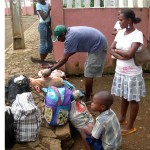
Patient Alice buys a pig. M. Sayagues
The early minibus was full. The second arrived at noon and went half-way to Angolares, where we waited for three hours. Alice bought a freshly butchered pig and stuffed it in a plastic bag. I took photos. We got to the capital after sunset.
How hard can it be to maintain a total of 320 kms of roads in the tiny islands? Since 2007, small billboards brag about a European Union aid project to improve roads. What a joke. Looks more like dead aid managed by the architects of poverty.
]]>Seven PM at the supermarket. After a long day at the office, she is standing in line to pay for groceries to make dinner, stealing glances at her watch, grappling with two young kids who want her to buy some chewing gum…
Does this picture ring a bell? Survey [...]]]>
Seven PM at the supermarket. After a long day at the office, she is standing in line to pay for groceries to make dinner, stealing glances at her watch, grappling with two young kids who want her to buy some chewing gum…

Unequal sharing of the work pie. M. Sayagues
Does this picture ring a bell? Survey after survey across the world report that women put in between 20 and 30 hours a week of domestic and family work. Unseen, unsung and unpaid, yes, but not insignificant.
Unpaid work in the home, done mainly by women, is estimated at approximately 50 percent of all productive activity even in industrial countries, and as much as 60-70 percent in many developing countries,” says Hazel Henderson in an interview with IPS.
“The U.N. Human Development Report and its Human Development Index (HDI) in 1996 calculated that unpaid work was estimated at 16 trillion dollars (11 trillion dollars by women and 5 trillion dollars by men). This figure was simply missing from the official global GDP figure of 24 trillion dollars, although a truer figure would have been 40 trillion dollars for global GDP in 1996.”
Henderson – futurist, economic iconoclast, founder of Ethical Markets Media and author - was commenting on the just published “Stiglitz-Sen Report”, which argues that countries need to find ways to measure well-being alongside raw economic growth.
Having dedicated her studies to an interdisciplinary economic and political theory focused on environmental and social issues, her views couldn’t be more pertinent.
(Find Henderson’s books)
]]>The UN has finally decided to stand up for women! A decision to create a new agency for women was taken by the General Assembly on September14.
Our colleague Thalif Deen, IPS bureau chief in New York, was the first and only journalist to report it for the [...]]]>
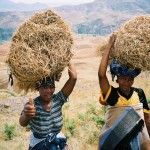
A breakthrough for us as well? M. Sayagues
The UN has finally decided to stand up for women! A decision to create a new agency for women was taken by the General Assembly on September14.
Our colleague Thalif Deen, IPS bureau chief in New York, was the first and only journalist to report it for the first several hours.
But this blog is not to crow about our scoop.
I’m quite excited by the prospect of a new women’s agency with money and political power. No longer will the world’s feminists have to lobby from the outside to put their views on the table. They have now won admission to the high table.
Any one of those bright, articulate, activist women can emerge to lead the agency. The reality is likely to be less rosy. But chances are that, because it’s new, it will be less under the thumb of the old boy network.
You think I’m a romantic? What the hell, there is no harm in dreaming, is there? I like to think that there was no way that the General Assembly could have once again shelved the plan for a new women’s agency.
It’s 14 years since Beijing. All the small and big things that governments were forced to accept around women’s rights (CEDAW, MDG, etc.) made it impossible for any country to block the efforts of myriad initiatives (from small grassroots groups to reforms in government policies even if they started as mere tokenism) and to politicise the cause of gender equality.
I do see great hope in the increasing presence of women in politics – Liberia, Japan, India, wherever you look, even Iran (new ministers) and the Gulf (Saudi Arabia has made a few small concessions to women!).
Of course, there is a backlash too – more violence against women worldwide.
As IPS gender editor, I am sure we will keep track of the new agency as it will be a key player achieving the MDG3 goal – gender equality.
Well, hope springs eternal!
]]>Instead of striking a balance between ambition and realism, the MDGs have become [...]]]>
Instead of striking a balance between ambition and realism, the MDGs have become “money-metric and donor-centric”, “meaningless catch-all phrases.”
So says Jan Vandemoortele, a Belgian national, a United Nations senior official and one of the architects of the MDGs, in a thought-provoking article in the July issue of Development Policy Review of the Overseas Development Institute. (read it here)
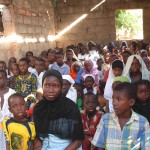
Unrealistic goal? A crowded classroom in Guinea Bissau...
The author recalls that the MDGs were set up in 2000 as collective targets based on extrapolations of global trends. They are vague by definition; they are not one-size-fits-all.
Instead, one should look at countries’ historical backgrounds, natural endowments and specific problems, then adapt the Goals to each circumstance, as Mozambique, Cambodia and Ethiopia have done.
Otherwise, this puts undue pressure on the poorest countries and, given that most of these are in Africa, nurtures Afro-pessimism.
For example, the global target for education “is not realistic” for countries in conflict, he says.
True, targets do change. For example, water for all in 2015 morphed into the more feasible goal of halving the number of people without clean water.
Magic numbers
A mantra has evolved: if only there were more money and higher economic growth, the MDGs would be achieved. Who is fond of these “magic numbers”? Staff at global headquarters of aid organisations, says the author, because of their “excessive reliance on abstract concepts.” (he should know, with his long career as a top UN official).
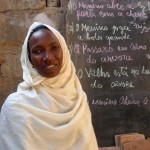
..and their teacher. By M. Sayagues
Vandemoortele sees the MDG canon being usurped by interest groups to push their agendas or devalued “as a repackaged call for more foreign aid.”
Rather, the MDG should be a tool to examine disparities and inequities within countries. In his view, the poorest people continue to be excluded. Many of these are women. Without better sex-disaggregated data, the gender dimension of hunger, illiteracy, disease and poverty remains unexposed.
Most progress takes place among the better off, and inequality and inequity keep rising, says the author.
“The targets are often presented as a universal good that will not demand tough policy choices and hard trade-offs among social groups within a country,” he says.
The MDGs should usher in new thinking about inequalities if they are not to miss the point
What do you think? Send us your views.
]]>I just attended the Grassroots Women’s International Academy on Home Based Care in Johannesburg, South Africa.
It was a mixed bag of fun meeting women from all walks and works of life from Kenya, Cameroon, Uganda, Malawi, Nigeria, Ethiopia, Rwanda, Zambia, [...]]]>
I just attended the Grassroots Women’s International Academy on Home Based Care in Johannesburg, South Africa.
It was a mixed bag of fun meeting women from all walks and works of life from Kenya, Cameroon, Uganda, Malawi, Nigeria, Ethiopia, Rwanda, Zambia, Ghana, Namibia, Zimbabwe, and South Africa.
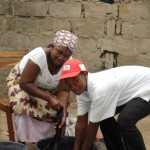
Caregiving in Mozambique. Photo: Janine Morna
The Huairou Commission and the Land Access Movement of South Africa brought us together to share experiences of home-based care.
It is fascinating how in Malawi the care givers alliance has moved forward. Victoria Kalomba, of the Malawi Group of Women Living with HIV and AIDS told us that the ministry of health and social development had spearheaded a campaign to raise awareness about people infected and affected by HIV.
The process had the ministry informing the support groups of individuals who had tested positive after visiting clinics so they could be reached and helped.
I am worried about this way of outing positive people even in the aim of mobilizing support groups. I feel that it is a human right violation to have to give information of someone’s HIV status.
Victoria was less worried. She said that the government has passed a policy that makes any name calling of people living with HIV a criminal offence. Okay.
Yet there is always stigma, just like one hears sexist and racist comments daily. Just because it is punishable has not stopped people from abusing or victimizing others. So I am wary of this and rather uncomfortable.
Next move
For caregivers, the issues are:
· remuneration,
· training and recognition of care givers as professionals,
· logistic and material support,
· psycho-social support to care givers and
· gender equality, and encouraging men to participate in care giving
Our next move is to lobby governments to recognize care work as a profession.
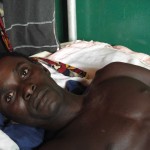
Carers ease the burden of disease. Photo: M. Sayagues
My sense is that there is a need for an alliance to assist in forming one body to represent caregivers. Most women caregivers said they felt disrespected, as they are not recognised for all their care work in health. No thanks are coming their way. They are very sore and disheartened at this lack of recognition. To move forwards, they require a voice to represent them.
One caregiver from Ethiopia said: “I will be taking so much home! I have realised that there are other countries struggling with lack of government support in the area of care work. We hope to continue to be in touch, especially on the issue of the alliance”.
To be able to laugh, as we share these issues, gives one hope. It is a strategy that I feel will take these unsung heroes to greater heights and at some point their voices will be heard.
As we said farewell, I felt a strong bond of sharing experiences and a need to continue the network.
I am sure I will meet most of these passionate women at this week’s SADC Heads of State Summit in Kinshasa, Democratic Republic of Congo, where today GEMSA is launching its report “Making Care Work Count – A Policy Analysis.”
The study covers Botswana, Democratic Republic of Congo, Lesotho, Malawi, Mauritius, Mozambique, Namibia, South Africa, Swaziland, Tanzania, Zambia and Zimbabwe.
GEMSA will strategize with civil society partners to lobby around care work in these countries.
]]>